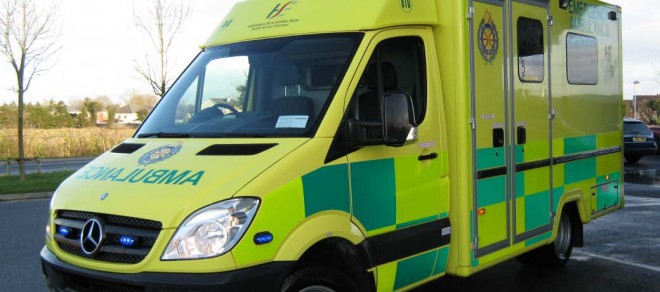
AN ambulance transporting a young patient from Donegal to Dublin broke down outside Letterkenny last month, resulting in the need for another vehicle to continue the journey.
The National Ambulance Service Representative Association (NASRA) has warned that it is only a matter of time before one of these events will seriously impact on a patient outcome.
NASRA Secretary, Mr Tony Gregg, said the Donegal incident was yet another example of the problems arising with the ageing and high mileage ambulance fleet.
“The ambulance is a basic tool of the emergency services and it is unacceptable that some vehicles, with more than 450,000kms on the clock and parts falling off, are still allowed on the road. It is time for significant investment by government to address the issue,” he said.
Almost one in three ambulances in use in the HSE West is more than eight years old, most of which have more than 400,000km on the clock. This is despite the fact HSE rules state any ambulance over seven years old must be replaced for safety reasons.
While a HSE vehicle replacement system is ongoing, over €18 million is due to be spent in 2016, the problems are unlikely to be resolved soon.
“We have an ageing fleet and it doesn’t matter how many times you service a vehicle. If it’s ten-years old, it’s ten years old and given the distances and terrain, the problems are exacerbated in rural counties like Donegal.
“There was much fanfare recently when the government announced that sixty new ambulances were coming on stream but they’re simply replacing clapped out vehicles which were already unsafe,” Mr Gregg said.
A spokesman for the National Ambulance Service confirmed an ambulance suffered a loss of power on the outskirts of Letterkenny while on route to Beaumont Hospital in Dublin with an ‘urgent’ (not emergency) category patient on board last month.
“The crew continued to Lifford Ambulance Station and transferred the patient to another ambulance and continued the journey to Beaumont.
“The NAS commissioned 64 new Emergency Ambulances to its fleet in 2015 and plans to introduce a further 85 new Emergency Ambulances in 2016,” the spokesman said.
Last year, four ambulances dispatched from Letterkenny University Hospital (LUH) to emergency situations broke down, resulting in the need for another ambulance to be provided.
In August, two wheels fell off an ambulance while a patient was on board. The incident occurred as a patient was being brought from Letterkenny General Hospital to Galway University Hospital on 26 August.
“The HSE West should have an up-to-date fleet instead of expecting us to use vehicles which shouldn’t be on the road – full stop,” Mr Gregg said.
“NASRA is concerned that it is only a matter of time before one of these events will seriously impact on a patient outcome,” he added.
“We have had experiences whereby ambulances have come out of casualty and driven down the road only for the wheel to fall off. We need to have confidence in our equipment and that’s not the case at the present time.
“We need to remove risks to our staff, patients and other road users. It could well prove fatal if it is not corrected – and soon,” he warned.
At a recent meeting of the Regional Health Forum West, Chief Officer, Mr John Hayes, confirmed 31 ambulances operating in the region were eight or more years old, 29 have between 200,000 miles and 300,000 miles, a further 23 vehicles between 300,000 miles and 400,000 miles while 16 have more than 400,000 miles on their odometers.
“Under National Ambulance Service Fleet replacement Policy for 2016 over €18m will be invested under the HSE Capital Programme. Nationally a total of 50 new vehicles and 35 remount vehicles (cab will be retained and new engine and cab) will be introduced,” Mr Hayes said.
“By the end of 2016 the oldest vehicles in the West Area will be 2011 registrations – 16 from a fleet of 96. The age profile of remaining vehicles is 131 upwards. The expectation is that there will be continued investment in a replacement program going forward to maintain the age profile of the vehicles.”
AN ambulance transporting a young patient from Donegal to Dublin broke down outside Letterkenny last month, resulting in the need for another vehicle
Ambulance with young patient broke down
Posted: 9:00 pm May 13, 2016
Posted: 9:00 pm May 13, 2016
Advertisement









